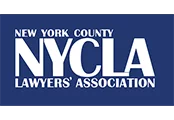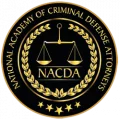Stealing and causing property damage is always a crime. That includes when the action is committed against a deceased person. And for New York residents, New York Penal Law § 145.22 makes cemetery desecration a second degree class A misdemeanor. There are several New York laws that address stealing and vandalism. But New York Penal Law § 145.22 specifically concerns cemetery property. Under this law, cemetery desecration in the second degree means:
1. Purposely damaging the property or land maintained in a place that houses human remains. The perpetrator must have no legal reason or right to damage the property.
2. Purposely stealing personal property located in a location that houses human remains. Or stealing property owned by a person or organization responsible for the upkeep of a place that houses human remains. Stealing from the estate of a deceased person is also considered cemetery desecration in the second degree. The perpetrator must have performed these actions in spite of having no legal reason or right to do so.
Examples of Second Degree Cemetery Desecration
Susan and 5 of her friends decide to visit a cemetery on Halloween night. As a Halloween trick, the group decides to damage more than 20 headstones. Some of the older headstones are completely destroyed as a result of the prank. Susan and her friends have committed cemetery desecration in the second degree. They went to the cemetery for the sole purpose of damaging the headstones.
Sam and a group of friends decided to steal brass urns and graveside markers from a local cemetery. They went into the cemetery after it had closed. Once the items were taken, Sam and his friends sold the items for scrap metal. This is cemetery desecration in the second degree because the group purposely visited the cemetery to steal property.
Related Crimes
There are additional New York penal laws that address stealing and/or damaging property. These laws include:
1. New York Penal Law § 145.12 – criminal mischief in the first degree.
2. New York Penal Law § 145.10 – criminal mischief in the second degree.
3. New York Penal Law § 145.05 – criminal mischief in the third degree.
4. New York Penal Law § 140.05 – criminal trespass.
Defense Against a Cemetery Desecration Charge
Stealing or damaging cemetery property can lead to a conviction for cemetery desecration. It must be obvious that the property was stolen or damaged on purpose. If property was disturbed, but not actually damaged, then the charge is unlikely to stick. But proving that a theft took place by accident is a more difficult task. It would have to be clear that the stolen item wasn’t intentionally taken.
Sentencing for a Conviction
Second degree cemetery desecration is a class A misdemeanor. It carries a lighter punishment than a felony, but it’s still a crime. Punishment can include up to a year in jail. Based on the circumstances, the court may decide not to impose time in jail. Three years probation and a fine is a possible alternative.
Facing a Charge of Second Degree Cemetery Desecration
Any type of criminal charge is a serious matter. A misdemeanor or a felony can result in jail time. A qualified attorney can represent a case in court. Professional representation is often better than self-representation.
An attorney will know how to skillfully argue a case, discover supporting evidence, and understand the legalities of the case. The attorney may be able to prove innocence, and get the case dismissed. In the event of a conviction, the attorney may be able to get the lightest possible sentence. Anyone dealing with a possible conviction for cemetery desecration should contact an attorney.



















